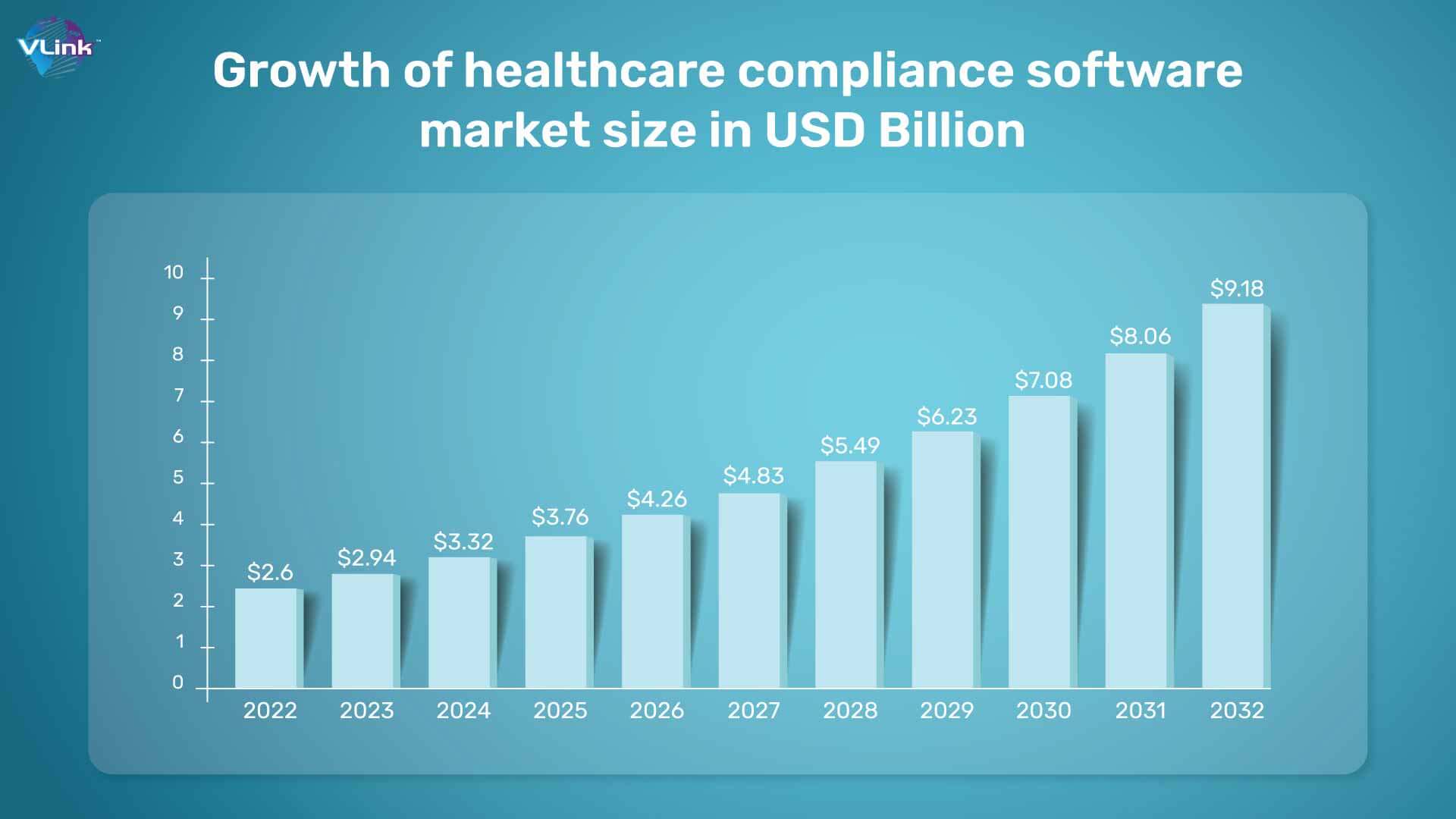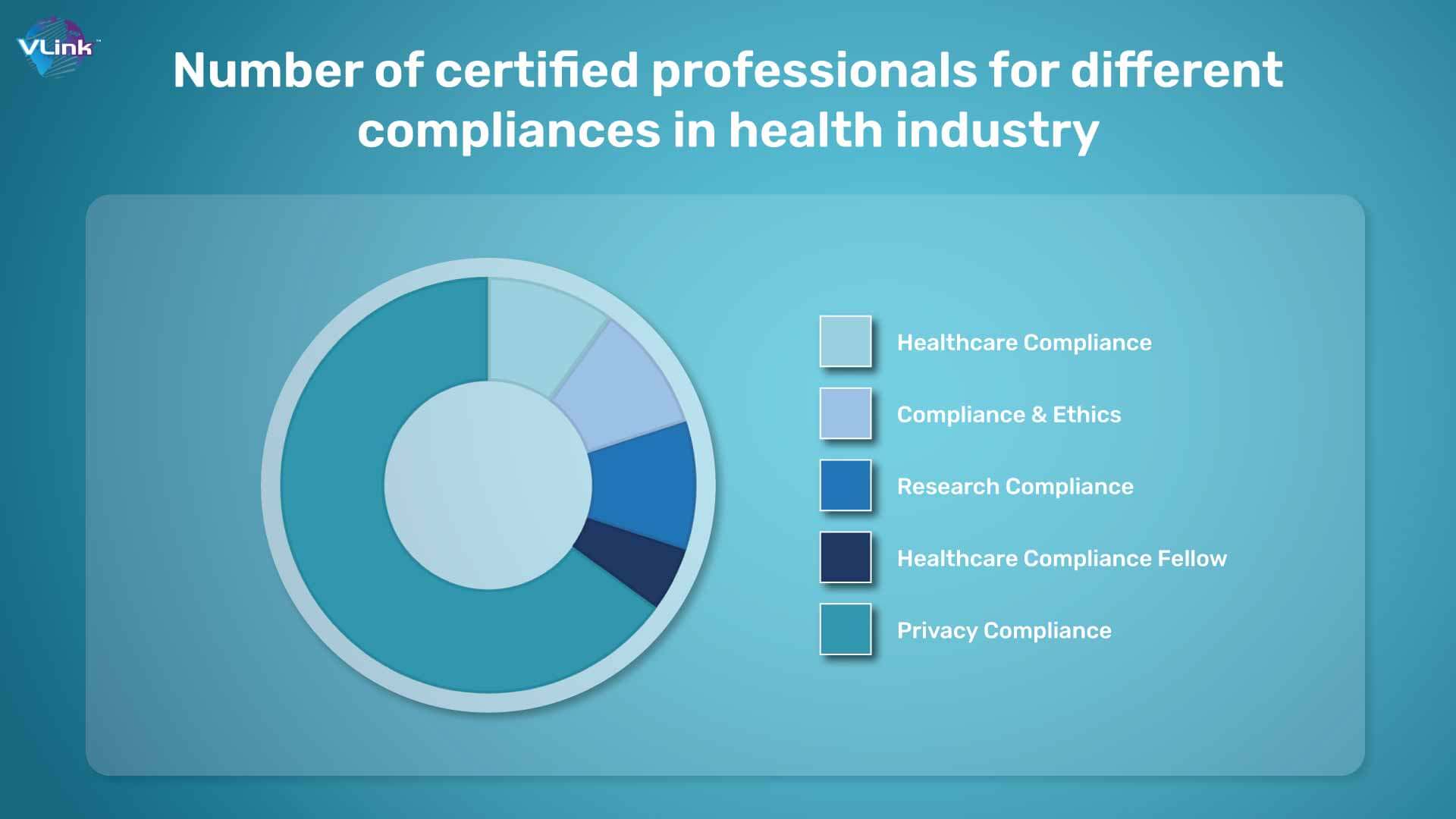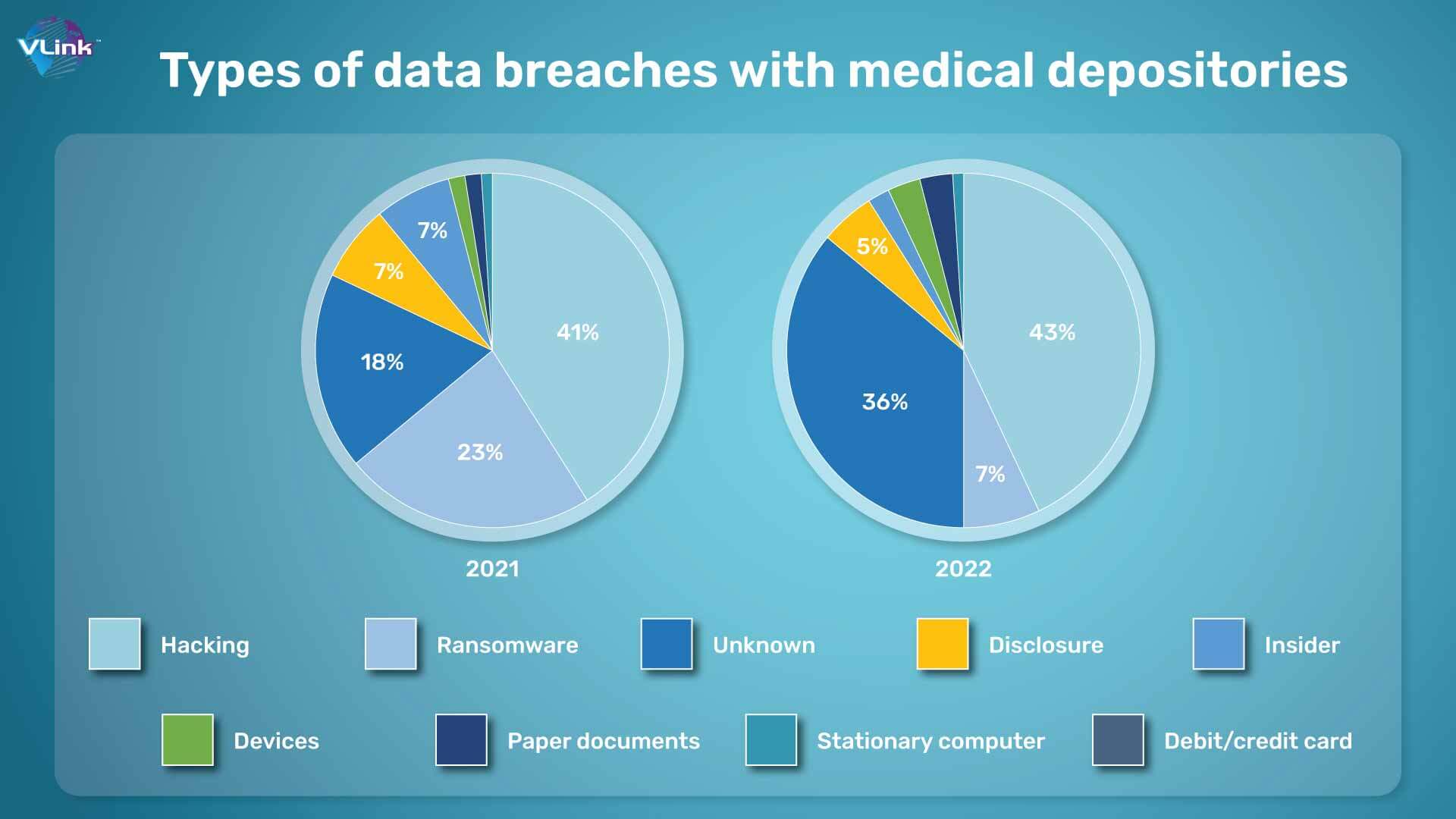In the ever-evolving landscape of healthcare, mobile health (mHealth) applications have emerged as transformative tools. These applications, running on mobile devices, bring healthcare services and information to the palm of our hands. However, the development of mHealth software must be executed with utmost precision, particularly concerning healthcare compliance.
The United States has led the way in medical and digital health innovation in recent years. These changes have led to many new laws, regulations, and legislation, creating a need for healthcare in healthcare settings. These regulations apply to everything from following safety procedures to providing quality care to protecting health information and collecting medical bills.
 This blog will guide you through the core concepts of building mHealth software that not only meets but exceeds healthcare compliance standards. But first, you need to understand these compliances and their significance.
This blog will guide you through the core concepts of building mHealth software that not only meets but exceeds healthcare compliance standards. But first, you need to understand these compliances and their significance.
What Is Healthcare Compliance?
Healthcare compliance is a critical aspect of the healthcare industry, encompassing a set of rules, regulations, and standards designed to ensure the ethical, legal, and secure delivery of healthcare services. This multifaceted framework aims to safeguard patient information, uphold the integrity of healthcare practices, and maintain the highest standards of patient care.
Understanding healthcare compliance is essential for healthcare providers, organizations, and professionals to navigate the complex regulatory landscape effectively. Healthcare organizations must navigate a complex landscape of regulations to ensure the highest standards of care, protect patient privacy, and maintain the trust of the communities they serve.
 Regular training, robust policies and procedures, and a commitment to ethical conduct are fundamental in achieving and sustaining healthcare compliance. The primary goal of healthcare organization compliance with GRC is to improve patient care. However, most healthcare regulations and compliance still focus on patient safety, privacy, and payment.
Regular training, robust policies and procedures, and a commitment to ethical conduct are fundamental in achieving and sustaining healthcare compliance. The primary goal of healthcare organization compliance with GRC is to improve patient care. However, most healthcare regulations and compliance still focus on patient safety, privacy, and payment.
Most Common Healthcare Compliances
Healthcare compliance is a multifaceted concept, encompassing various regulations and standards to ensure the confidentiality, integrity, and availability of patient information. Here are the key pillars:
HIPAA is a foundational piece of healthcare compliance in the United States. Enacted in 1996, it addresses the privacy and security of patients' health information. HIPAA establishes national standards for the protection and confidential handling of Protected Health Information (PHI).
Enacted as part of the American Recovery and Reinvestment Act of 2009, HITECH focuses on the adoption and meaningful use of Electronic Health Records (EHRs). It strengthens HIPAA by imposing stricter penalties for non-compliance and promoting the secure exchange of health information through technology.
The Food and Drug Administration (FDA) regulates medical devices, including certain software applications used in healthcare (Mobile Medical Apps). Compliance involves adherence to quality system regulations and, in some cases, pre-market submission requirements.
These laws are designed to prevent fraud and abuse in healthcare, particularly concerning financial relationships between healthcare providers and entities. The Anti-Kickback Statute prohibits offering, paying, soliciting, or receiving remuneration to induce or reward referrals of healthcare services. The Stark Law focuses on prohibiting physician self-referral.
Providers participating in Medicare and Medicaid programs must comply with specific regulations to ensure the proper billing and provision of services. Non-compliance can result in severe financial penalties and exclusion from these federally funded healthcare programs.
The ACA introduced significant reforms to the U.S. healthcare system and includes provisions related to fraud prevention, transparency, and quality of care. Compliance involves adherence to these provisions to ensure ethical and lawful healthcare practices.
 While originating in the European Union, GDPR has global implications for healthcare organizations that handle the data of European residents. It emphasizes data protection, user consent, and the right to be forgotten.
While originating in the European Union, GDPR has global implications for healthcare organizations that handle the data of European residents. It emphasizes data protection, user consent, and the right to be forgotten.
Why should mHealth software be healthcare compliant?
As we know about healthcare compliance and their most common components that should be prioritized in the process of healthcare software development, here are some core reasons that will help you understand their significance:
Patient Privacy Protection: Healthcare compliance measures, especially those outlined in HIPAA, are designed to protect the privacy and confidentiality of patients' health information. This fosters trust between patients and healthcare providers.
Data Security: With the increasing digitization of healthcare records and the use of technology, compliance standards ensure the implementation of robust security measures to safeguard sensitive health data from breaches and unauthorized access.
 Quality of Care: Compliance regulations often include guidelines to enhance the quality of healthcare services. Adhering to these standards ensures that patients receive safe, effective, and high-quality care.
Quality of Care: Compliance regulations often include guidelines to enhance the quality of healthcare services. Adhering to these standards ensures that patients receive safe, effective, and high-quality care.
Legal & Financial Safeguards: Compliance violations can result in severe legal and financial consequences, including fines, penalties, and legal actions. Healthcare organizations that prioritize compliance mitigate these risks.
Interoperability & Information Exchange: Standards such as FHIR (Fast Healthcare Interoperability Resources) facilitate the interoperable exchange of health information. This enhances communication between healthcare systems and promotes coordinated, patient-centered care.
Ethical Business Practices: Healthcare compliance extends beyond legal requirements to encompass ethical considerations in business practices. It ensures transparency, fairness, and integrity in healthcare operations.
How To Build a Healthcare Compliant mHealth Software?
Now that we understand the regulatory landscape, let's delve into the steps to build mHealth software that adheres to healthcare compliance.
Before writing a single line of code, conduct a comprehensive compliance assessment. Identify which regulations apply to your app and understand the specific requirements of each. This assessment will be the foundation of your compliance strategy.
Encryption is non-negotiable when handling sensitive health data. Make sure to utilize end-to-end encryption for data while sharing the data among multiple users. Use secure communication protocols such as HTTPS to ensure the confidentiality and integrity of data during transmission.
Distributing the roles for data access can help you track activities, keeping the security on top and avoiding the chaos in the mHealth software. Implement strong authentication mechanisms, such as two-factor authentication, and employ role-based access controls to restrict data access based on user roles.
Incorporate privacy considerations into the core design of your mHealth app. Adopt a privacy-by-design approach, emphasizing data minimization, purpose limitation, and user consent. Clearly communicate privacy practices to users through a transparent Privacy Policy.
If your mHealth app integrates with other healthcare systems or databases, prioritize interoperability. Adhere to industry standards such as Fast Healthcare Interoperability Resources (FHIR) for seamless data exchange and integration with EHR systems.
Conduct regular security audits and HIPAA-compliant testing to identify and rectify vulnerabilities. Engage in penetration testing, code reviews, and vulnerability assessments to fortify your app's security posture continuously.
Educate both end-users and your development team about the importance of healthcare compliance. Ensure that users are aware of their rights concerning data privacy and provide training to your team to stay updated on compliance requirements.
Clearly articulate how your mHealth app handles user data in your Terms of Service and Privacy Policy. Be transparent about data collection practices, storage duration, and the purpose of data processing. This builds trust with users and demonstrates your commitment to compliance.
Maintain meticulous documentation of your compliance efforts. Keep records of risk assessments, security measures, and any steps taken to address identified vulnerabilities. This part highlights the core of trust for the healthcare service provides, and hence proving their commitment towards users’ data security.
Healthcare compliance is an ongoing process. Implement continuous monitoring of your mHealth app's security measures and stay abreast of changes in regulations. Adapt your practices accordingly to remain compliant in an ever-evolving healthcare environment while keeping an eye on most common compliances to make your software upgraded.
VLink’s Role in Following Healthcare Compliances While Building mHealth Software
In the complex landscape of healthcare compliance, partnering with a seasoned software development company is instrumental in ensuring the seamless integration of compliance measures into mHealth software.
VLink, a leading software development company, stands as a reliable ally in crafting healthcare-compliant mHealth solutions. Here's how VLink can play a pivotal role:
- Expertise in Regulatory Requirements
VLink boasts a team of seasoned professionals well-versed in the intricacies of healthcare compliance regulations, including HIPAA, HITECH, and other industry standards. Our deep understanding of these requirements ensures that your mHealth software aligns with the latest compliance guidelines.
- Robust Security Infrastructure
Security is at the forefront of healthcare compliance. VLink implements state-of-the-art encryption mechanisms, secure data transmission protocols, and stringent access controls to fortify your mHealth software against unauthorized access, safeguarding patient data with the utmost precision.
- Customized mHealth Solutions
VLink takes a tailored approach to mHealth software development. Understanding that each healthcare project is unique, we work closely with our clients to craft customized solutions that meet their specific compliance needs. Whether it's patient data management, interoperability, or telehealth features, our solutions adhere to the highest compliance standards.
- Seamless Integration with Existing Systems:
Healthcare organizations often operate with existing systems and databases. VLink ensures seamless integration of your mHealth software with these systems while adhering to interoperability standards. This results in a cohesive healthcare ecosystem were data flows securely and efficiently.
- Continuous Compliance Monitoring
VLink implements continuous monitoring systems, regularly auditing the security measures of your mHealth software. This proactive approach ensures that any emerging threats are addressed promptly, maintaining the software's compliance integrity.
- User-Centric Design & Education
VLink prioritizes user-centric design principles, incorporating features that prioritize user experience without compromising compliance. Additionally, we offer user education components within the software, ensuring that both healthcare professionals and end-users are aware of privacy practices and compliance expectations.
- Adaptable Development Models
Recognizing the dynamic nature of healthcare compliance, VLink offers adaptable development models. Whether your project requires an agile development approach for rapid iterations or a more structured model, our flexibility ensures that compliance is seamlessly integrated at every stage.
- Experienced in Medical Imaging & Healthcare Data
If your mHealth software involves medical imaging or the handling of complex healthcare data, VLink's expertise in these domains ensures that the software complies with specialized standards such as DICOM. This is crucial for applications dealing with diagnostic imaging and medical data processing.
VLink combines technical expertise, a commitment to security, and a tailored approach to ensure that your mHealth software not only meets but exceeds healthcare compliance standards.
By choosing us as your development partner, you're investing in a collaborative relationship that prioritizes the integrity, security, and compliance of your mHealth solutions in the ever-evolving landscape of healthcare technology.
Frequently Asked Questions
Yes. A flexible approach to mHealth software development ensures adaptability to changes in healthcare compliance regulations. Staying informed and updating development practices accordingly is integral to maintaining compliance.
Continuous compliance monitoring involves regular security audits and assessments. Proactive identification of potential vulnerabilities and rapid response mechanisms are implemented to ensure that the mHealth software maintains compliance integrity over time.
Achieving interoperability involves adhering to standards like FHIR (Fast Healthcare Interoperability Resources). mHealth software should be designed to seamlessly integrate with Electronic Health Records (EHRs) and other healthcare databases.
mHealth software must comply with regulations such as HIPAA, HITECH, FDA regulations for Medical Devices, and, if applicable, GDPR. These standards ensure the privacy, security, and integrity of patient data.







